Create a Screen Partition for Your Home in 5 Easy Step

Open-plan living spaces are a staple of modern homes, but they often come with a challenge: how do you carve out private areas without sacrificing style or openness? Whether you’re working from home, craving a cozy reading nook, or simply want to define separate zones in a shared space, a screen partition can be the perfect solution. These versatile dividers not only enhance functionality but also add a touch of elegance to your interiors.
In this guide, we’ll walk you through how to create a screen partition for your home that’s both practical and visually stunning. From choosing the right materials to incorporating design trends, we’ll cover everything you need to know to transform your space with ease. Let’s dive into the art of partitioning and explore creative ideas to make your home more functional and beautiful.
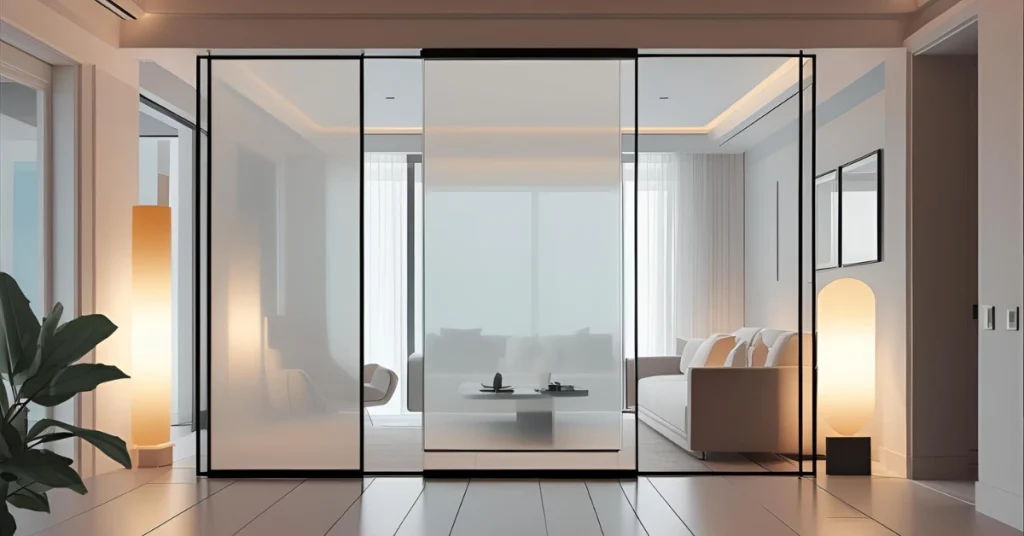
What Is a Screen Partition and Why It Matters
A screen partition is a freestanding or semi-permanent divider used to separate areas within a room. Unlike walls, screen partitions are flexible, often portable, and can be customized to match your home’s aesthetic. They’re ideal for renters, small-space dwellers, or anyone looking to refresh their home without major renovations.
Benefits of Using Screen Partitions
- Versatility: Easily moved or reconfigured to suit changing needs.
- Aesthetic Appeal: Adds texture, color, and personality to any room.
- Space-Saving: Perfect for small apartments or open-plan homes.
- Privacy: Creates intimate zones without blocking light or airflow.
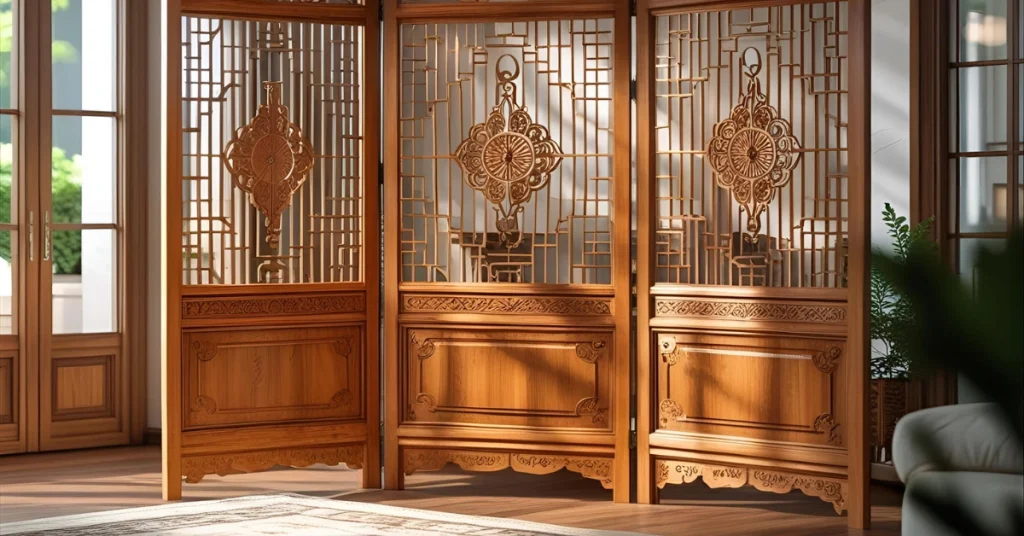
According to interior designer Sarah Thompson, “Screen partitions are a game-changer for modern homes. They allow homeowners to experiment with layouts while maintaining a cohesive design.” Whether you’re dividing a living room from a dining area or creating a private workspace, a well-designed screen partition can elevate your home’s functionality and charm.
Types of Screen Partitions for Your Home
Before you create a screen partition for your home, it’s essential to understand the different types available. Each style offers unique benefits, so let’s explore the most popular options.
1. Folding Screen Partitions
Folding screens are classic and portable, often made of wood, fabric, or metal. They typically feature hinged panels that fold for easy storage. These are perfect for renters or those who love to rearrange their space frequently.
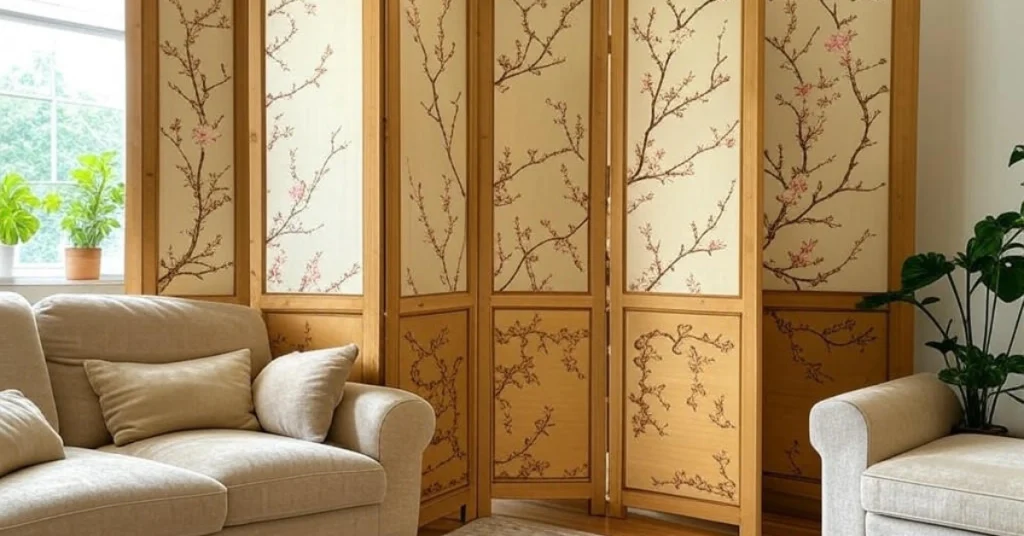
- Best For: Living rooms, bedrooms, or temporary setups.
- Design Tip: Choose a folding screen with intricate patterns or bold colors to double as a statement piece.
2. Sliding Panel Partitions
Sliding panels glide along tracks, offering a sleek, modern look. They’re often made of glass, wood, or frosted acrylic, making them ideal for larger spaces.

- Best For: Home offices or dining areas.
- Design Tip: Opt for frosted glass panels to maintain privacy while allowing light to filter through.
3. Fabric or Curtain Partitions
Curtains or fabric panels hung from ceiling tracks create soft, flowy dividers. They’re budget-friendly and easy to install, making them a favorite for DIY enthusiasts.
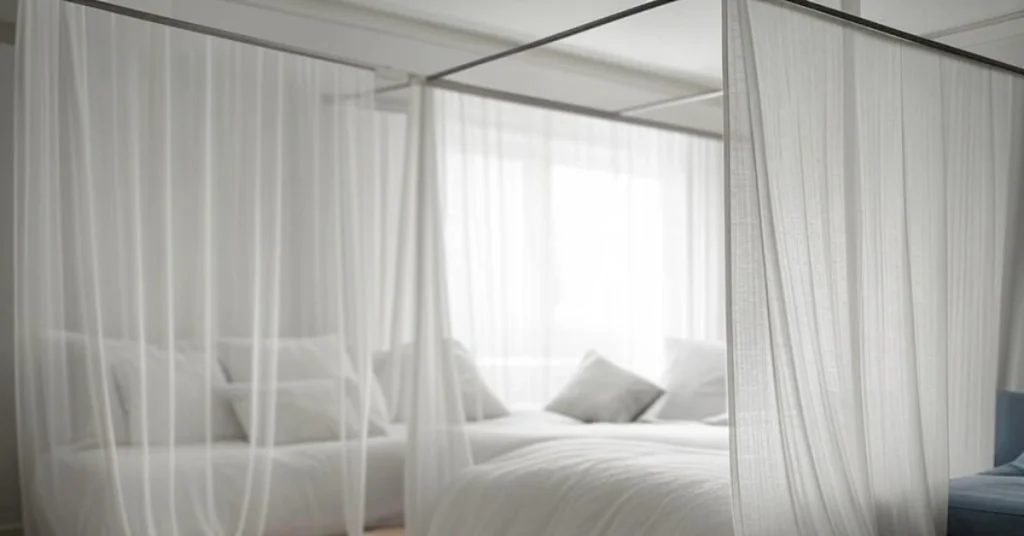
- Best For: Bedrooms or cozy corners.
- Design Tip: Use sheer fabrics for a light, airy feel or heavy drapes for added privacy.
4. Wooden or Bamboo Partitions
Wooden or bamboo screens bring warmth and natural texture to a space. They’re durable and can be carved or painted for a custom look.

- Best For: Rustic or bohemian interiors.
- Design Tip: Stain the wood to match your furniture for a cohesive aesthetic.
5. Bookshelf or Storage Partitions
These dual-purpose dividers combine shelving with partitioning, offering both style and functionality. They’re perfect for displaying decor or organizing books while dividing a room.
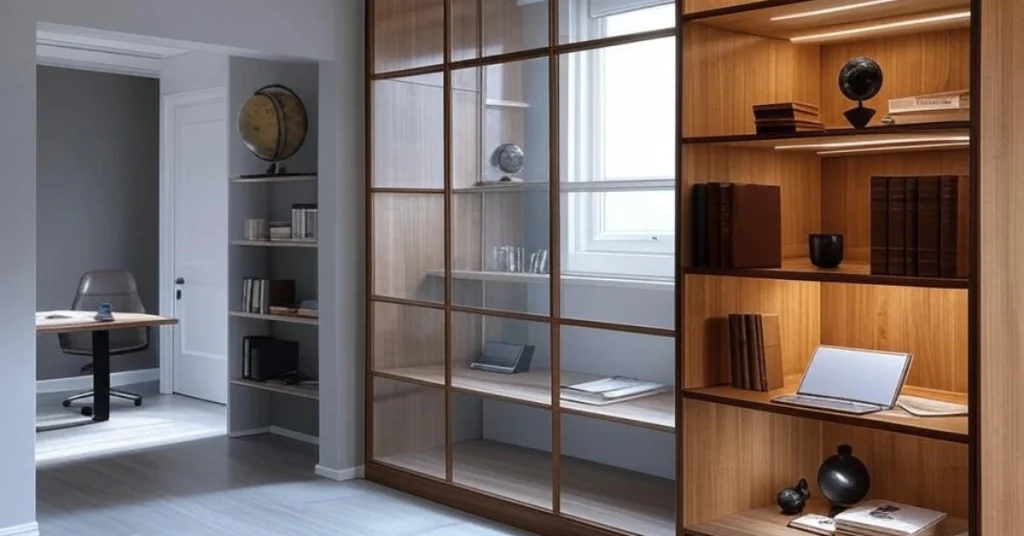
- Best For: Home offices or living rooms.
- Design Tip: Arrange plants and decorative items on the shelves to enhance visual appeal.
Step-by-Step Guide to Create a Screen Partition for Your Home
Ready to create a screen partition for your home? Follow these five practical steps to design a divider that’s both functional and stylish.
Step 1: Assess Your Space and Needs
Before you begin, evaluate the area where you want to place the partition. Consider the following:
- What’s the purpose of the partition (privacy, decoration, or storage)?
- How much space do you have to work with?
- Do you need a permanent or temporary solution?
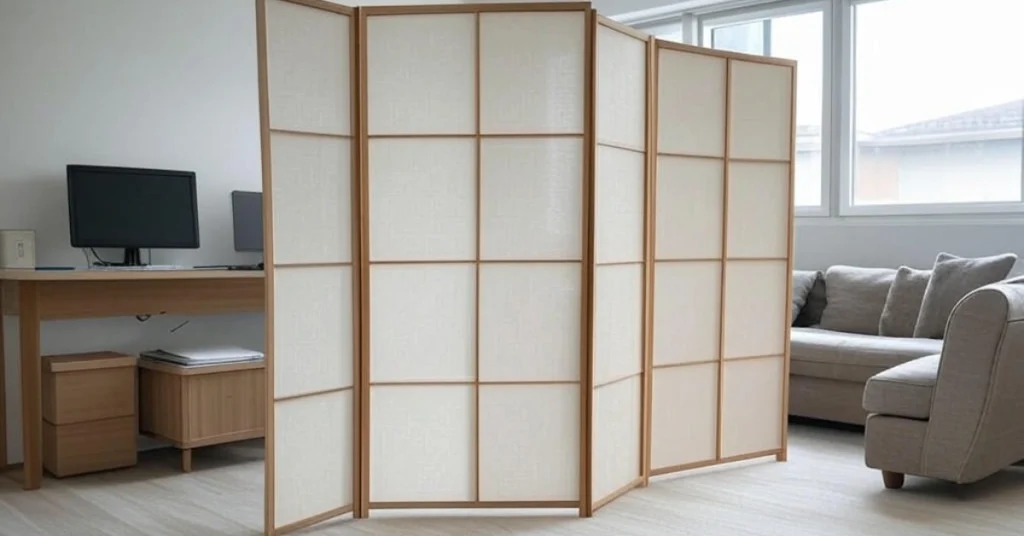
For example, in my own small apartment, I used a folding screen to separate my living area from a makeshift office. It instantly made the space feel more organized without blocking natural light.
Step 2: Choose the Right Material
The material you choose will define the look and durability of your partition. Here’s a quick comparison:

| Material | Pros | Cons |
|---|---|---|
| Wood | Durable, customizable, warm aesthetic | Can be heavy, expensive |
| Fabric | Affordable, lightweight, soft look | Less durable, may need frequent cleaning |
| Glass/Acrylic | Modern, allows light to pass through | Fragile, may show fingerprints |
| Metal | Sleek, sturdy, modern | Can be costly, may rust over time |
| Bamboo | Eco-friendly, lightweight | Limited style options |
“Choose materials that complement your existing decor,” advises interior designer Emily Carter. “A cohesive look ties the room together and makes the partition feel intentional.”
Step 3: Design Your Partition
Now comes the fun part—designing your screen partition! Consider these elements:
- Color: Match or contrast with your room’s palette.
- Pattern: Geometric designs for modern spaces, floral for traditional.
- Height and Width: Ensure the partition is proportionate to the room.
- Mobility: Decide if you want a fixed or movable partition.
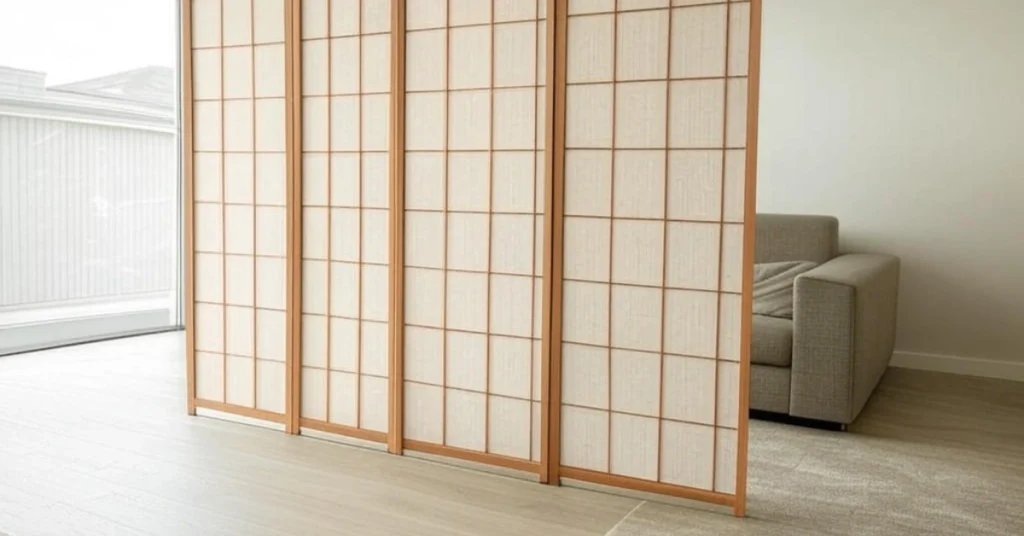
For inspiration, look at trends like Japandi-style screens with minimalist wooden slats or boho-chic macramé dividers. Websites like Houzz or Pinterest can spark ideas tailored to your taste.
Step 4: Build or Buy Your Partition
You have two options: purchase a ready-made screen or create a DIY masterpiece.
Option 1: Buying a Ready-Made Partition
Retailers lika IKEA, West Elm, and Wayfair offer a range of stylish partitions. Look for options with good reviews and durable materials. For example, IKEA’s RISÖR room divider is a popular choice for its affordability and versatility.
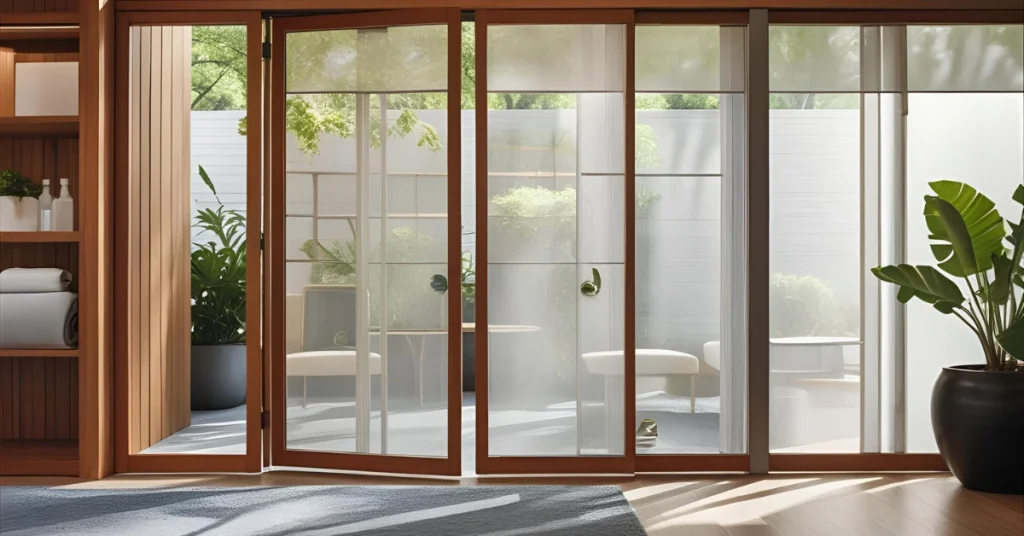
Option 2: DIY Screen Partition
If you’re crafty, building your own partition is rewarding. Here’s a simple DIY idea:
- Materials Needed: Wooden frames, hinges, fabric or lattice panels, paint, screws.
- Steps:
- Assemble three wooden frames (e.g., 6 ft tall, 2 ft wide each).
- Attach hinges to connect the frames.
- Cover with fabric or lattice for a decorative touch.
- Paint or stain to match your decor.
- Cost: Approximately $50–$100, depending on materials.
A friend of mine built a lattice screen for her studio apartment, and it transformed the space for under $80. It’s a budget-friendly way to create a screen partition for your home.
Step 5: Install and Style Your Partition
Once your partition is ready, position it strategically. Secure sliding panels to ceiling tracks or ensure folding screens are stable. Style the surrounding area with plants, rugs, or lighting to enhance the partition’s impact.
Pro Tip: Place a tall plant or floor lamp next to the partition to draw attention to the new focal point.
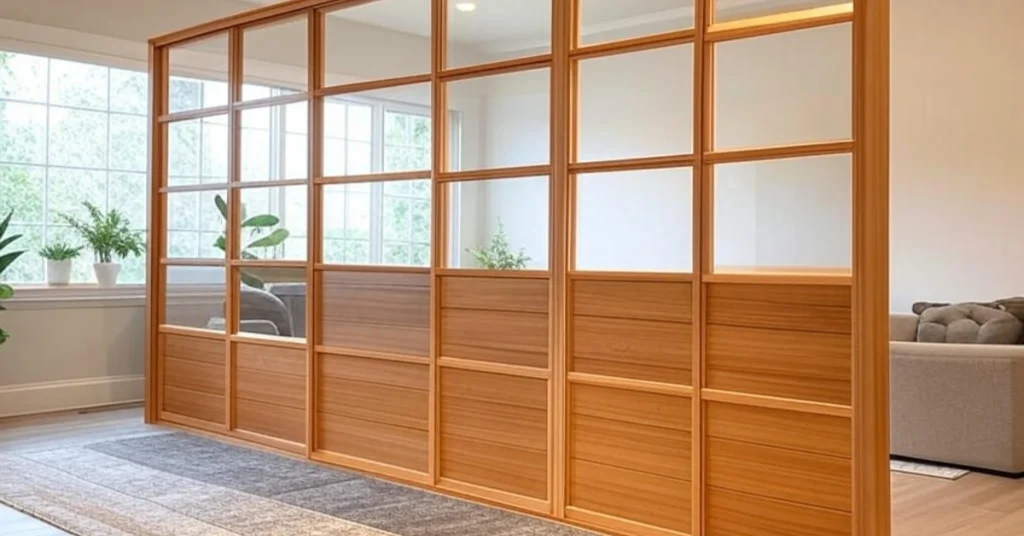
Creative Ideas to Inspire Your Screen Partition Design
Need inspiration? Here are 15 creative ways to create a screen partition for your home:
- Macramé Magic: Hang a woven macramé panel for a boho vibe.
- Vintage Vibes: Use an antique folding screen with carved details.
- Industrial Edge: Opt for a metal-framed screen with glass inserts.
- Nature-Inspired: Create a bamboo screen with potted plants at the base.
- Artistic Flair: Paint a mural on a wooden screen for a custom look.
- Minimalist Chic: Use slim wooden slats for a Japandi-style divider.
- Fabric Flow: Hang sheer curtains for a soft, romantic partition.
- Booklover’s Dream: Build a bookshelf divider with open shelves.
- Rustic Charm: Use reclaimed wood for a farmhouse-style screen.
- Modern Glam: Choose a mirrored screen to reflect light and add luxury.
- Textile Art: Upholster panels with bold, patterned fabric.
- Sliding Doors: Install shoji-style sliding screens for an Asian-inspired look.
- Chalkboard Fun: Cover a screen with chalkboard paint for a playful touch.
- Greenery Wall: Attach faux vines to a lattice screen for a living wall effect.
- Photo Gallery: Hang a screen with photo frames for a personal touch.
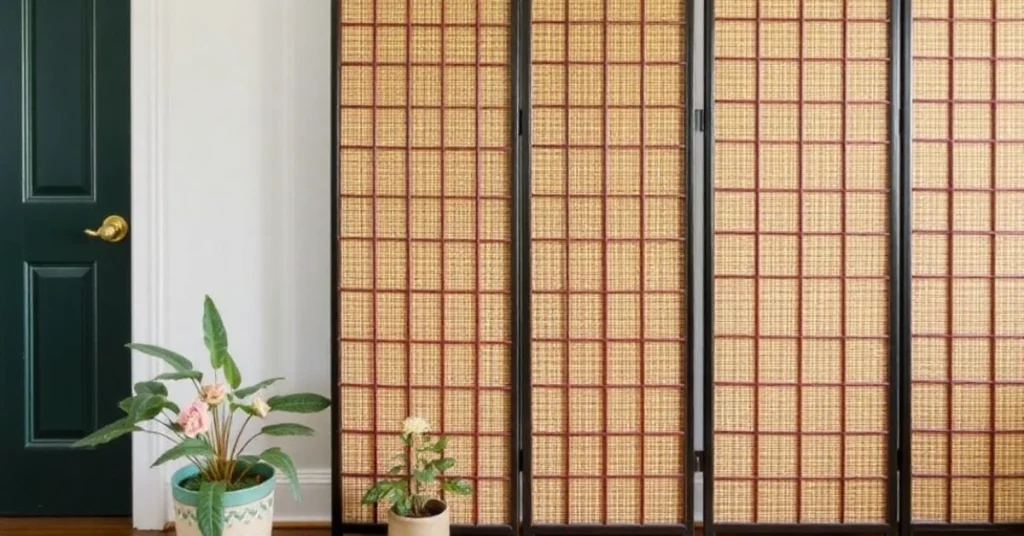
Common Mistakes to Avoid When Creating a Screen Partition
While it’s exciting to create a screen partition for your home, avoid these pitfalls:
- Ignoring Scale: A partition that’s too tall or wide can overwhelm a small room.
- Choosing Flimsy Materials: Invest in sturdy materials to ensure durability.
- Neglecting Lighting: Ensure the partition doesn’t block natural light.
- Overcomplicating Design: Keep it simple for a timeless look.
Interior designer Mark Reynolds notes, “The biggest mistake is choosing a partition that clashes with the room’s style. Always prioritize harmony in design.”
Maintenance and Care for Your Screen Partition
To keep your partition looking pristine, follow these tips:
- Wooden Screens: Dust regularly and polish with wood-safe products.
- Fabric Screens: Vacuum gently or spot-clean with mild detergent.
- Glass/Acrylic: Wipe with a microfiber cloth and glass cleaner.
- Metal Screens: Use a damp cloth to prevent rust buildup.

Regular maintenance ensures your partition remains a stunning feature in your home for years.
Where to Find Materials and Inspiration
Ready to start? Here are some trusted sources for materials and ideas:
- Home Depot or Lowe’s: For wood, hinges, and hardware.
- Etsy: For custom or handmade screens.
- Pinterest: For design inspiration and DIY tutorials.
- Architectural Digest: For high-end design trends and ideas.
For historical context, screen partitions have roots in ancient China, where folding screens were used as early as the Han Dynasty (206 BCE–220 CE) for both practical and decorative purposes (source: Metropolitan Museum of Art). Today, they remain a timeless solution for modern homes.
Conclusion: Transform Your Home with a Screen Partition
Creating a screen partition for your home is a brilliant way to enhance both form and function. Whether you opt for a sleek sliding panel, a cozy fabric divider, or a custom DIY creation, the right partition can redefine your space with style. By following the steps and ideas in this guide, you’ll be well-equipped to design a partition that meets your needs and elevates your home’s aesthetic.
Ready to get started? Explore your options, gather materials, and create a screen partition for your home today. Share your project in the comments or tag us on social media we’d love to see your creations!






